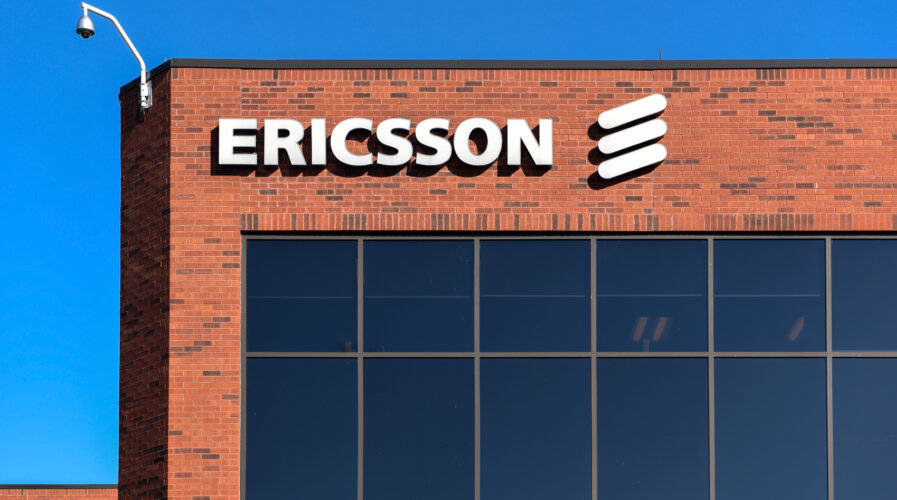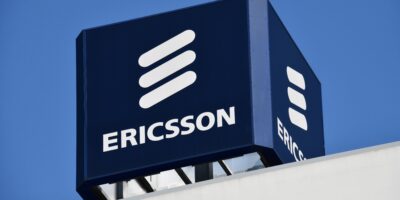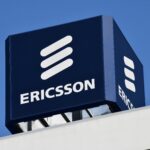
Ericsson to utilize Intel’s 18A process and manufacturing technology for its 5G infrastructure.Source: Shutterstock
Intel to utilize its 18A process to make 5G chips for Ericsson
- Ericsson to utilize Intel’s 18A process and manufacturing technology for its 5G infrastructure.
- The deal includes Intel making custom 5G system-on-chips for Ericsson.
For nearly a decade, Ericsson has collaborated with US chip giant Intel Corp on the former’s fifth-generation (5G) network developments. This week, Ericsson announced that it is expanding the partnership by utilizing Intel’s 18A process and manufacturing technology for the former’s future 5G infrastructure.
A statement by Intel disclosed that it is collaborating with the Swedish telecommunications gear maker to make a custom chip for Ericsson’s 5G networking gear, using the most advanced manufacturing technology it has disclosed.
In April this year, during Intel’s launch of its new facility in Oregon, CEO Pat Gelsinger unveiled that the company’s flagship process, dubbed 18A, was six months ahead of schedule. The 18A node was originally due to arrive in 2025, but that’s now been moved up to late 2024.
For context, 18A is the most advanced node on Intel’s five-nodes-in-four-years roadmap. “After new gate-all-around transistor architecture – known as RibbonFET – and backside power delivery – called PowerVia – appear first in Intel 20A, Intel will deliver ribbon architecture innovation and increased performance along with continued metal linewidth reduction in 18A,” the chip giant said in a statement dated July 26.
These technologies will put Intel back in the process leadership position in 2025, elevating future offerings its customers bring to market. For years, Intel has lost its lead in manufacturing the smallest and most power-efficient semiconductors to rivals such as Taiwan Semiconductor Manufacturing Co.
That is how an essential piece of Gelsinger’s plan came about in 2021 – to regain that lead and turn the company around to pack five generations of chip manufacturing advances into four years. As one might recall, Intel stalled out from 2015 to 2019, trying to move from 14nm to 10nm.
It finally overcame its challenges and has transitioned to 10nm on desktop with Alder Lake, though Intel calls that process Intel 7.
How will Ericsson utilize the 18A process by Intel?
Intel reckons the collaboration with Ericsson signals confidence in its 18A process technology and underscores progress on Intel’s roadmap to regain process leadership. As part of the agreement, Intel will also manufacture custom 5G SoCs (system-on-chip) for Ericsson to create “highly differentiated leadership products for future 5G infrastructure”, the company said.
According to the chip giant, the chips for Ericsson will be among the first from outside customers that Intel will use the technology. Intel and Ericsson did not explain when the chip will hit the market.
Additionally, the companies will expand their collaboration to optimize 4th Gen Intel® Xeon® Scalable processors with Intel® vRAN Boost for Ericsson’s Cloud RAN (radio access network) solutions to help communications service providers increase network capacity and energy efficiency while gaining greater flexibility and scalability.
“Ericsson has a long history of close collaboration with Intel, and we are pleased to expand this further as we utilize Intel to manufacture our future custom 5G SoCs on their 18A process node, which is in line with Ericsson’s long-term strategy for a more resilient and sustainable supply chain,” Fredrik Jejdling, executive vice president and head of Networks at Ericsson said.
Jejdling also shared that Ericsson will expand the collaboration with Intel, announced at MWC 2023. “To work together with the ecosystem to accelerate industry-scale open RAN utilizing standard Intel Xeon-based platforms,” he added.
As 5G deployments continue, Intel believes the future lies in fully programmable, open software-defined networks powered by the same cloud-native technologies that transformed the data center, delivering unparalleled agility and automation.
Therefore, to realize the best performance, innovation, and global scale, the chip giant believes the industry needs to work together and continue synchronizing network specifications as part of one international set of standards.
“Intel and Ericsson collaborate with other leading technology companies to bring these benefits to their customers toward industry-scale open RAN,” Intel concluded.
READ MORE
- 3 Steps to Successfully Automate Copilot for Microsoft 365 Implementation
- Trustworthy AI – the Promise of Enterprise-Friendly Generative Machine Learning with Dell and NVIDIA
- Strategies for Democratizing GenAI
- The criticality of endpoint management in cybersecurity and operations
- Ethical AI: The renewed importance of safeguarding data and customer privacy in Generative AI applications


